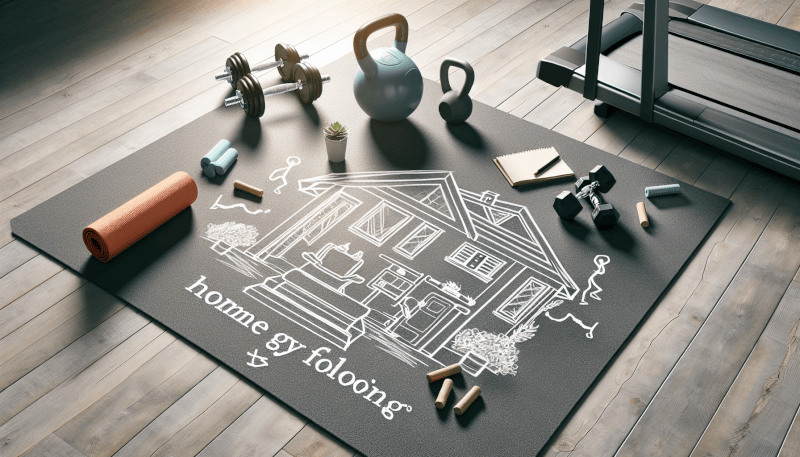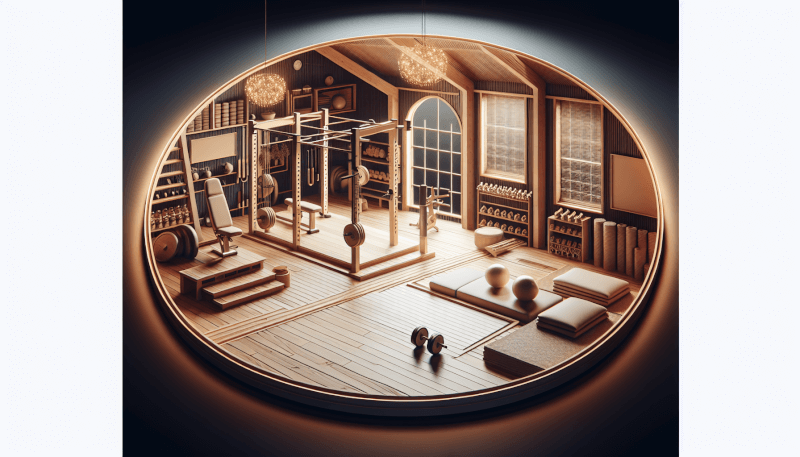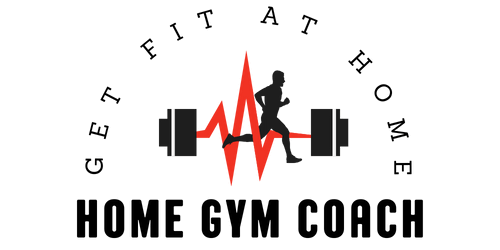Creating a comfortable and safe environment for your home gym is essential to maximizing your workout experience. That’s where home gym flooring comes in. Whether you’re into cardio, weightlifting, or yoga, choosing the right flooring is crucial to protect your body and prevent any damage to your floors. From rubber tiles to foam mats, the options are endless. In this article, we’ll explore the different types of home gym flooring available, their benefits, and how to choose the perfect flooring for your fitness sanctuary. Get ready to transform your home gym into a space that not only motivates you but also gives you the support you need to achieve your fitness goals.

Benefits of Home Gym Flooring
Having a home gym is a convenient way to stay fit and active without having to leave the house. But before you start setting up your equipment, it’s important to consider the type of flooring you’ll be using. Home gym flooring offers several benefits that can greatly enhance your workout experience.
Prevents damage to flooring
One of the key benefits of using home gym flooring is that it prevents damage to your existing flooring. Whether you have hardwood, carpet, or tile, the constant impact of heavy weights and exercise equipment can cause scratches, dents, and other types of damage. Home gym flooring provides a protective barrier that absorbs the impact and prevents these damages from occurring.
Reduces noise
If you live in an apartment complex or have neighbors living close by, noise can be a major concern when working out at home. Traditional flooring materials such as hardwood or tile can amplify the sound of footsteps, dropped weights, and exercise equipment movements. By investing in home gym flooring, you can significantly reduce the noise levels, allowing you to exercise without disturbing others.
Provides cushioning and support
Another benefit of home gym flooring is that it provides cushioning and support, which is essential for high-impact activities such as weightlifting or cardio exercises. This extra cushioning helps to reduce the risk of injuries by absorbing the shock and providing a softer surface to land on. Additionally, it offers support for your joints, preventing unnecessary strain and reducing the chances of long-term damage.
Types of Home Gym Flooring
When it comes to home gym flooring, there are various options available to choose from. Each type has its own unique characteristics, so it’s important to consider your specific needs and preferences before making a decision.
Rubber flooring
Rubber flooring is a popular choice for home gyms due to its durability and versatility. It provides excellent shock absorption, making it ideal for heavy weightlifting and high-intensity workouts. Rubber flooring is also known to be slip-resistant, which adds an extra layer of safety to your workout space.
Foam flooring
Foam flooring is another popular option that offers great cushioning and support. It is soft, comfortable to walk on, and provides a padded surface for exercises like yoga and pilates. Foam flooring is available in various thicknesses and densities, allowing you to customize the level of cushioning based on your preferences.
Vinyl flooring
Vinyl flooring is a cost-effective option that offers durability and easy maintenance. It is resistant to scratches, stains, and moisture, making it suitable for home gyms where spills and accidents may occur. Vinyl flooring is available in a wide range of colors and designs, allowing you to create a stylish and personalized workout space.
Cork flooring
Cork flooring is an eco-friendly option that provides excellent shock absorption and thermal insulation. It is a renewable and sustainable material, making it a great choice for those who prioritize environmental considerations. Cork flooring also has antimicrobial properties, which help to prevent the growth of bacteria and mold in your home gym.
Interlocking tiles
Interlocking tiles are a versatile option that allows for easy installation and customization. These tiles can be easily snapped together, eliminating the need for adhesives or special tools. Interlocking tiles come in various materials such as rubber, foam, or vinyl, offering different levels of durability and cushioning.
Factors to Consider when Choosing Home Gym Flooring
When choosing home gym flooring, there are several factors to consider to ensure that you make the right choice for your specific needs.
Durability
Durability is a key consideration when it comes to home gym flooring. You want a flooring material that can withstand heavy weights, frequent foot traffic, and the general wear and tear of a workout space. Look for materials that are specifically designed for high-impact activities and have a long lifespan.
Thickness
The thickness of the flooring is important for providing the necessary cushioning and support. Thicker flooring is generally better at absorbing shock and reducing impact on your joints. However, keep in mind that thicker flooring may also raise the level of your floor, which can affect the overall height of your exercise equipment.
Shock absorption
Shock absorption is crucial for reducing the risk of injuries during high-impact activities. Look for flooring materials that have sufficient shock absorption properties, especially if you engage in activities like weightlifting or plyometric exercises. Materials such as rubber and foam are known for their excellent shock absorption capabilities.
Easy to clean
Home gyms can easily accumulate sweat, dirt, and bacteria, so it’s important to choose flooring that is easy to clean and maintain. Look for materials that are resistant to stains and moisture, and can be easily wiped down or mopped. Vinyl and rubber flooring are typically the easiest to clean, requiring minimal effort to keep them looking fresh and sanitary.
Price
Price is another important factor to consider when choosing home gym flooring. Set a budget for yourself and look for options that fall within your price range. Keep in mind that while some materials may have a higher upfront cost, they often offer better durability and longevity, making them a worthwhile investment in the long run.

Installation and Maintenance of Home Gym Flooring
Once you have chosen the right home gym flooring for your needs, it’s time to install and maintain it properly to ensure its longevity and performance.
Preparing the area
Before installing the flooring, make sure to thoroughly clean and prepare the area. Remove any existing flooring and ensure that the subfloor is clean and level. This will provide a smooth surface for the new flooring and prevent any unevenness or bumps.
Laying the flooring
Follow the manufacturer’s instructions for proper installation of the flooring. Some types, like interlocking tiles, can be easily installed as a DIY project. Others, such as rubber rolls or vinyl sheets, may require professional installation to ensure a seamless finish. Take your time to ensure that the flooring is properly aligned and secure.
Maintaining and cleaning the flooring
To maintain your home gym flooring, it’s important to clean it regularly. Sweep or vacuum the flooring to remove any dust or debris, and use a mild cleaner to wipe down the surface. Avoid using harsh chemicals or abrasive materials that can damage the flooring. If your flooring has any specific maintenance requirements, follow the manufacturer’s recommendations.
Recommended Home Gym Flooring Brands
When it comes to choosing home gym flooring, there are several reputable brands that offer high-quality products. Here are a few recommended brands to consider:
XMark Fitness
XMark Fitness provides a range of home gym flooring options, including rubber tiles and rolls. Their flooring is known for its durability, shock absorption, and easy installation.
ProsourceFit
ProsourceFit offers a variety of foam and rubber flooring options that are perfect for home gyms. Their products are known for their cushioning, slip resistance, and affordable prices.
BalanceFrom
BalanceFrom is a well-known brand that offers a wide selection of high-quality home gym flooring options. Their products are known for their durability, shock absorption, and easy maintenance.
IncStores
IncStores specializes in rubber flooring for home gyms and provides a range of options to choose from. Their flooring is known for its durability, noise reduction, and versatility.
Tips for Designing a Home Gym
Designing a home gym is not just about choosing the right flooring and equipment. Here are a few tips to help you create a functional and motivating workout space:
Consider the space available
Before you start purchasing equipment and flooring, carefully measure the available space in your home. Take into account any limitations and restrictions, such as low ceilings or narrow doorways. This will help you choose the right size of equipment and ensure that there is enough space for you to move around comfortably.
Choose equipment placement wisely
When setting up your home gym, consider the placement of your equipment. Place larger pieces such as treadmills or weight benches against the walls to maximize the open space in the center. Leave enough room between each piece of equipment to prevent overcrowding and ensure safe movement.
Create a motivating atmosphere
Your home gym should be a space that inspires you to stay active and motivated. Consider adding elements such as motivational quotes, mirrors to track your progress, and a sound system to play energizing music. Personalize the space with colors and decorations that make you feel excited and enthusiastic about your workouts.
Cost of Home Gym Flooring
The cost of home gym flooring can vary depending on the type of material, brand, and quality. Here are a few options to consider based on different budget ranges:
Budget-friendly options
If you’re on a tight budget, foam flooring and interlocking tiles are cost-effective choices. These materials offer decent durability and cushioning at a more affordable price point.
Mid-range options
Rubber and vinyl flooring are often available at mid-range prices. These options provide better durability and support, making them suitable for more intense workouts.
High-end options
For those who want the best of the best, high-end options like premium rubber flooring or specialty cork flooring are available. These materials offer superior durability, top-notch shock absorption, and a luxurious feel.
Comparison of Home Gym Flooring Materials
When it comes to choosing between different home gym flooring materials, it’s important to consider the specific advantages and disadvantages of each option. Here are a few comparisons to help you make an informed decision:
Rubber vs. Foam
Rubber flooring is known for its durability and shock absorption, making it ideal for heavy weightlifting. Foam flooring, on the other hand, provides a softer and more comfortable surface, making it suitable for low-impact exercises like yoga or pilates.
Vinyl vs. Cork
Vinyl flooring offers easy maintenance, resistance to moisture, and a wide range of design options. Cork flooring provides excellent shock absorption, thermal insulation, and eco-friendly properties. Consider your specific needs and priorities when choosing between these two options.
Interlocking tiles vs. Traditional flooring
Interlocking tiles are easy to install, customizable, and offer good shock absorption. Traditional flooring options like rubber rolls or vinyl sheets may require professional installation but provide a more seamless finish. Consider the level of convenience and customization you desire when making your choice.
Common Mistakes to Avoid when Choosing Home Gym Flooring
When selecting home gym flooring, it’s important to avoid certain common mistakes that can lead to dissatisfaction or unnecessary expenses. Here are a few things to keep in mind:
Not considering the weight and impact of exercise equipment
It’s crucial to choose flooring that can withstand the weight and impact of your exercise equipment. Failing to do so can result in damaged flooring or even accidents. Always check the weight capacity and impact resistance of your flooring before making a purchase.
Ignoring the specific exercise needs
Different types of workouts have different requirements. If you primarily engage in activities like weightlifting or high-intensity interval training, opting for flooring with excellent shock absorption is essential. On the other hand, if you focus on low-impact exercises like yoga or pilates, you may prioritize comfort and cushioning.
Focusing solely on appearance
While it’s important to create an aesthetically pleasing workout space, don’t solely focus on appearance when choosing home gym flooring. Consider factors like durability, maintenance, and functionality to ensure that your flooring can withstand the demands of your workouts.
Conclusion
Investing in the right home gym flooring is essential for creating a safe, comfortable, and motivating workout space. Consider the benefits of home gym flooring, the different types available, and the factors to consider when making a choice. Take into account your specific needs, budget, and preferences to find the perfect flooring that will enhance your fitness journey and help you achieve your health goals. With the right flooring, you can transform any space in your home into a functional and inspiring gym that supports your fitness routine.


